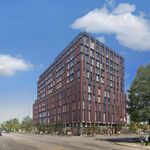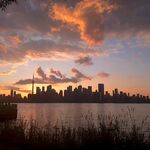Admiral Beez
Superstar
It's everyone's fault. The minute a driver gets out of his/her car he/she/shim is a pedestrian, and vice versa. Most of us will ride a bicycle sometime in our lives on a roadway, so again we'll all part of the three.
I think the separated bike lanes in Montreal are perfect for here.
No thanks. I think bike lanes from montreal create too many conflicts at intersections to be used on two-way streets (one ways are fine because they are simpler).
Personally I think the separated bike lanes in Amsterdam are perfect for here. If we're doing the separated bike lane thing, we might as well do it right.
I agree that Dutch standards are the best in the world. Unfortunately space constraints in many places downtown would preclude them, but there are many places where they could be implemented.
It irks me when a new road is built, or existing one rebuilt, and they just throw in the same on-street bike lanes. The recent Dufferin St rebuild in York region particularly bugs me, so much room for off-street bike lanes, which could have been built at probably the same cost of the rebuild. Same with the Eglinton LRT plan (before it became underground) which had on-street paths when there was plenty of room for off-street lanes.
The sad truth is you can't change people.
I'm going to call BS on this one. 30 years ago, in 1981?I disagree. The Netherlands was much like here 30 years ago. Similar infrastructure, people and a car society.




